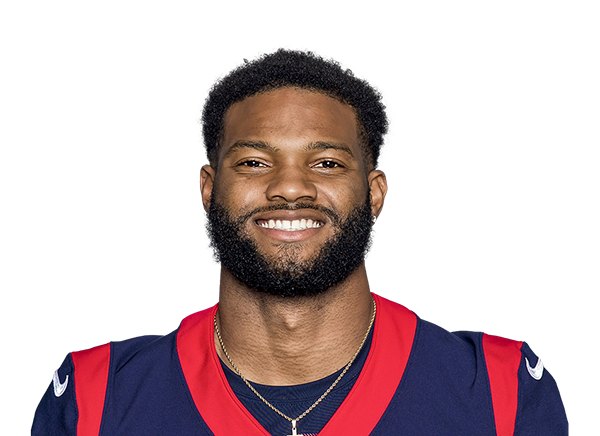Dynasty Football Fundamentals Part 2 – Dynasty Roster Construction
Have you ever constructed the perfect fantasy football roster, only to see it washed away at the end of the typical fantasy football season? I played the redraft format for years in an annual state of frustration for this very reason. But there is a better way. You too can break the chains of the redraft format. Dynasty fantasy football leagues will set you free! In this installment, we will be discussing dynasty roster construction and how to build an optimal dynasty roster.
Click here to read Dynasty Football Fundamentals Part I – Dynasty Fantasy Football Leagues.
Part 2: Dynasty Roster Construction
Goals in Dynasty Roster Construction
While roster size is easy to comprehend, roster construction can often be an afterthought when starting a dynasty team. In most cases, roster construction boils down to the starting lineup format and the number of players in the league. Below, I have laid my opinion on the ideal roster constructions based upon a 12 team league in three of the most common formats.
In the traditional “start one quarterback” league, you will see it is vital to not overload on the quarterback position. Only rostering two players at the position will allow you to hold high upside players at the running back and wide receiver slots. In the one quarterback format, it is important to understand the value of a quarterback is the lowest – this is largely caused by the market only demanding 12 usable players on a weekly basis. Due to a minimal difference in average points scored per week, it is wise to avoid large investments in the quarterback position. Additionally, the high supply of quarterbacks also allows for them to be easily be attained in trades or in waivers. Again, I highly recommend rostering as few of them as possible. I often go so far as to only holding one quarterback through the off-season in order to open a spot for an additional lottery ticket through a stash player.
In the other formats listed, it is a fatal mistake to apply the approach in single quarterback leagues. For those who might not know, a Superflex is a one-quarterback league that allows teams to start an additional quarterback at the flex, if they so choose. In superflex or start-two quarterback leagues, hold as many quarterbacks as possible. Why? Quarterbacks are the most stable scoring asset in fantasy, because they will almost always net at minimum 15 points each week. The multiple quarterback formats drastically raise the demand and drive up the desire for rostering several quality quarterbacks. This demand increases the draft cost, trade value, and waiver scarcity of all starting and backups quarterbacks. If you are starting a league with these formats, corner this market early in drafts and hold as many as possible. I highly recommend using your first two startup picks to ensure you aren’t left with only one solid long-term option. If you conclude your draft in monopoly fashion, you will quickly learn that having numerous desirable quarterbacks is synonymous to holding Apple stock in the early 90’s.
One of the bigger topics I will focus on in future discussions will be geared towards how to construct a dynasty roster even more effectively. However, I want to preface the article by advising balance. The balance I recommend you seek comes by managing both high upside lottery tickets with reliable players. On my best rosters, I balance these types of players as well as blending youth and older players. Here is my philosophy: Win now and posture for tomorrow. The quickest way to dynasty irrelevance is when you lose sight of this fact by becoming overly reliant on either the young, unproven talent or aging studs past their prime.
Take-away Advice: Balance your roster with a blend of low and high-risk players.
Ways to capitalize on scoring systems
Much like redraft leagues, there are several formats of scoring: standard, half-point per reception (half-PPR), and full point per reception (full-PPR). In the standard scoring format, players are not given additional points added for their weekly receptions. This, in turn, leads to a heavy reliance on total yards and touchdowns, while mitigating the importance of player opportunity. While I use this technique across all scoring formats, standard scoring demands that one identifies the players with the greatest chance to be exposed to high quality touches in the red zone. Specifically, I seek to build a roster full of complete depth charts of running backs who are tethered to great quarterbacks. By owning a full backfield, you relinquish the risk of lost opportunity caused by injury or any unforeseen changes on the depth chart. It is important to note the running back position holds 32 percent more risk for a significant in-season injury compared to the wide receiver position. As you begin to poke around dynasty tools like average draft position (ADP), you will notice the dynasty format favors the wide receiver position.
In short, receivers are perceived to have longer careers than running backs. Though career longevity will appear enticing, play the format (especially in standard scoring). By holding the entire backfields of the best offenses, I guarantee your discipline and steadfastness will reward you by leading to one or more league championships.
While the strategic approach for navigating to a championship in the standard scoring format is much more cut and dry, the other scoring formats become much more challenging. For those who might need clarification: PPR and half-PPR provide additional points atop the standard scoring for successful receptions. In the half-PPR and full-PPR scoring formats, my general rule is that volume of a player’s opportunity supersedes all. The additional points in this format decrease the reliance on touchdowns.
In allowing touchdowns to become the cherry on top of weekly performance, shift towards attempting to identify players who will receive the highest volume of touches. In short, the intent of the offense or quarterback plays an incredibly pivotal role for player evaluation due to the additional points created by the receiving game. This small adjustment in scoring drastically enhances the value of wide receivers and tight ends, making them of nearly equal in value as the running back position.
The biggest piece of advice I can give any player is to pay attention to Josh Hermsmeyer’s work on Air Yards. As you read more, you will realize that Air Yards enables us to quantify the intent of a quarterback (or an offense) by tabulating both complete and incomplete passing yards intended for a player. Interestingly, and more importantly, air yard is relatively agnostic of the quality of an offense and is an impeccable predictor of weekly scoring. Simply put, measurement of intent in the Browns offense is comparable to the intent in the Patriots offense. To date, air yards is the best resource I have found for receiver and tight end evaluation.
I understand if you are skeptical, however, in his weekly analysis of air yard distribution, Hermsmeyer was the first to suggest the breakout of receivers such as Tyrell Williams and Terrelle Pryor. If you are interested in learning more, click here for more information on Josh’s work on air yards or visit his archive at Rotoviz.
Side note: Check to see if your league operates on a four point or six point per passing touchdown system. If you discover the later, make sure you add a quarterback with a history of throwing a high number of touchdowns each season.
Take-away Advice: Consider acquiring the whole backfield for the high octane offenses across all scoring formats (especially standard scoring.) Target touchdowns in standard scoring and opportunity in half or full-PPR.
In summary, here is the takeaway advice from parts 1 and 2 of this series:
- Read through your dynasty rules and ask for any clarifications by the commissioner.
- Determine the depth of your league and seek to build a roster comprised of both low and high-risk players. Remember: Play to win, but don’t forget about tomorrow.
- In shallow roster leagues, designate two or three spots exclusive for deep stash players. Resist the urge to drop them in place for the short-term asset. Nothing in dynasty is more painful than dropping a long time stash and watching him blossom on another roster.
- In leagues with deep rosters or a larger league size, seek to add high-upside players who might not be relevant for a season or two. Additionally, acquire later round rookie picks in trades as a way of infusing your roster with young potential.
- Corner the quarterback market in superflex and two-QB leagues by any means necessary. Eventually, the reward will come by trading a non-starting quarterback on your squad for premium assets from a despite league mate.
- Buy the entire backfield of NFL’s most prolific offenses across all scoring formats (especially in standard scoring leagues). In standard formats, seek those in a position to get high-quality touches in the red zone. In half and full-PPR leagues, opportunity and intent are king. Seek players with high volume touches and Air Yards in an offense, regardless of the quality.
For more information on the top dynasty players, check out all of our complete Dynasty Fantasy Football Rankings which include positional rankings, IDP rankings and dynasty rookie rankings. All rankings include sorting and filtering features, comments by rankers, tiers, and more.
Also be sure to check out our industry leading Dynasty ADP as well as our new MFL Rookie ADP with data drawn from real dynasty leagues on MyFantasyLeague.
- The Top Five Durable Players by Position: Part Two - September 9, 2017
- The Top Five Durable Players by Position: Part One - September 6, 2017
- What are the Durability and Susceptibility Metrics? - July 16, 2017
























































